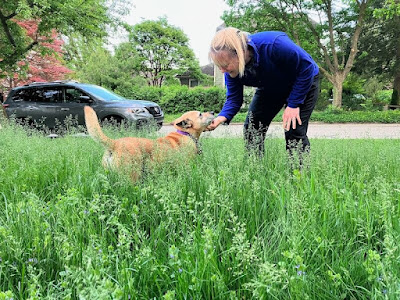Ann Arbor resident Sarah Baird, who is participating in No Mow May, plays with her rescue dog Suki in the tall grass in front of her Harbroooke Avenue home on May 23, 2022.
Of course there are no pesticides applied to prevent toxicity to the pollinators.
With 40 million acres (click here) dedicated to them, lawns are the largest irrigated crop grown in the US. Maintaining them requires significant effort and resources, such as mowing, fertilizing, weeding, and chemical treatments, which can be time-consuming and expensive.
Despite this, lawns offer minimal benefits to wildlife and can even be harmful due to their lack of floral resources and nesting sites for bees, as well as the use of pesticides.
The common association with habitat loss is usually linked to images of bulldozers and damaged earth, yet the loss of habitat caused by well-maintained lawns covering acres can be just as significant as any construction site....
So, the idea is this, if bees have pollen to collect and return to the beehive to produce honey, they will do better. That is exactly what might help. If "No Mow May" participants are seeing bees and other pollinators enjoying the taller plants that are normally mowed down, they will be correct in their focus to give the pollinators a "leg up" this year.
Bees (click here) feed on and require both nectar and pollen. The nectar is for energy and the pollen provides protein and other nutrients. Most pollen is used by bees as larvae food, but bees also transfer it from plant-to-plant, providing the pollination services needed by plants and nature as a whole....
continued...
